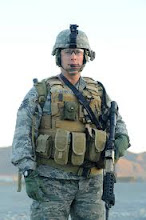Operational control of Infantry battalions is exercised by the Brigades and Divisions of which they form a part. Headquarters Infantry exists to give direction and professional advice on Close Combat and Infantry matters in order to support the delivery of current and future Defence capability. The Headquarters is located in the market town of Warminster, Wiltshire, on the site of the Land Warfare Centre. It is responsible for the recruiting, manning and training policy of the Infantry. In addition it determines the organisation of the Infantry and contributes to the development of equipment and capability.
infantry
14.23.00 |
The British Infantry is based on the tried and tested regimental system, which has repeatedly proved successful on operations over the years.
It consists of 36 regular battalions and 14 territorial battalions and forms 18 regiments and is based on regiments with one or more regular battalions and in most case associated TA battalions. The esprit de corps of the regimental system is maintained in the names, titles and traditions of British Infantry regiments handed down through history with a tradition of courage in battle.
Infantry regiments are grouped into divisions. These are no longer field formations but represent original historical groupings based on speciality and geography.
land of war
14.21.00 |
The British Infantry traditionally has been divided into two parts - the Foot Guards and the Infantry of the Line. The oldest Regiment of the Line is the The Royal Scots Borderers (1st Battalion The Royal Regiment of Scotland) which was formed in 1633 when King Charles I warranted Sir John Hepburn to raise a Scottish Regiment for service in France.
The Foot Guards have traditionally provided protection to the Monarch and trace themselves back to Bruges in 1656, when the Royal Regiment of Guards was raised by the exiled King Charles II. This Regiment went on to become the Grenadier Guards. Thereafter Regiments were raised by prominent members of society, often in response to calls from the monarch for support to meet a particular threat.
Originally most Regiments were known by their royal or distinctive title, or by the name of their Colonel.
Localisation
In 1872 Cardwell produced a "localisation" plan, which divided the country into 66 areas, based on county boundaries and population centres. In each area, regular and volunteer Infantry were organised to have a depot and 2 regular battalions. The militia were trained to act as a reserve in the event of an emergency.
Twentieth Century
In the twentieth century, the Infantry expanded and contracted significantly on a number of occasions. There were massive increases for Kitchener's volunteer Army and the later conscript Army of the First World War.
Large reductions followed the end of the War, only for the whole procedure to be repeated for the Second World War.
After the end of National Service there were further reductions throughout the 50s, 60s and 70s.
The Infantry was contracted as part of Options for Change after the end of the Cold War. This meant that several regiments were amalgamated to form larger regiments.
Despite all the changes over these centuries, a number of the features that make the Infantry so strong have endured. The Regimental system is still critical to maintaining the links between regular and territorial soldiers, old comrades and cadets; links which reinforce esprit de corps and assist recruiting.
TENTANG SAYA
13.59.00 |
HAII!!,,,,nama saya adalah GUSTAVIA BAYU S.
saya sekolah di SMP N 1 BOYOLANGU
Saya bertempat tinggal di kendalbulur, tulungagung.
Nama panggilan saya adlah TAVO
Umur saya 14 thn.
Nama ortu saya AGUZ DIANTO&SUDARTIK
Saya masih ambkant,
NO. HP SAYA 08578531097
Langganan:
Postingan (Atom)











